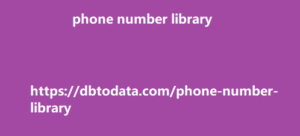78% of millennials say they prefer customer photos over professional photos shared by a brand. (Social Media Week) 57% of marketers say their biggest concern when it comes to UGC use is copyright issues. (Social Media Week) 60% of consumers would love brands to tell them what type of UGC to use and create. (State of User-Generated Content) Statistics on User-Generated Content, Source:in 2021 77% of shoppers are more likely to buy from brands that provide a personalized shopping experience. (State of User-Generated Content) 64% of users have used a hashtag or tagged a brand on their social media.
Emails that contain user-generated content
increase click-through rates up to 73%. (Salesforce) 48% of customers discover new products through user-generated content on social media feeds. (Taggbox) 78% of Millennials find a photo and video user-generated content extremely helpful when it comes to their purchasing decisions. (BusinessWire) Metaverse statistics Metaverse is a shared virtual environment in which users interact via avatars. In other words, it merges reality with the virtual world. Some data you might need to take note of: Metaverse is a network of virtual worlds in 3D that people can connect through Augmented Reality (AR) and Virtual Reality (VR). Some AR and VR games include Minecraft, Roblox, Pokemon, and Fortnite.
Virtual reality experts claim that the number
of VR users in the US is 57.4 million, while the number of AR users are 90.9 million. (eMarketer) Metaverse’s target audiences include young Millennial to Gen-Z professionals and C-level executives. (Statista) 11.3% of the Metaverse demographics are men, and 8.3% are women. (Statista) 35% of customers will do more shopping online if they can virtually try on a product. (BigCommerce) Virtual influencers are computer-generated characters that have almost been trending at the same rate as real-life influencers. To date, Lilmiquela, a virtual influencer has 3 million followers on Instagram. 35% of respondents have bought a product or service promoted by virtual influencers.
(The Influencer Marketing Factory) Many
brands are taking virtual and augmented experiences outside mobile phones already. (Smart Brief) Take a look at Pepsi’s bus-stop campaign on Talon’s YouTube channel: Pepsi AR bus stop campaign screenshot The official YouTube Virtual Reality Channel has 3.4 million subscribers to date. (Finances Online) Dimension studio made $6.5 million in revenue from their experimentation with metaverses for fashion brands. (Vogue) Cryptocurrency statistics Do you want to understand the state of the cryptocurrency market? If you are a crypto enthusiast, here are some figures that you might find interesting to note this year: Market segments for cryptocurrencies include banking, real estate, the stock market, and virtual currencies.
Over $500 million of transactions took place
in the stock market and the virtual cambodia phone number library currency sectors in 2019. (Facts and Factors) Vietnam has the highest 28.6% adoption rate of cryptocurrency. (Finder) Bitcoin has gained 136,260% between 2012 to May 2022. (Young and Invested) The price of bitcoin went from $6,000 to $60,000 in 12 months after the pandemic hit in March 2020. More than 14,000 posts related to cryptocurrency appear on Twitter every day. (Reuters) The social media landscape will play a big role in driving traffic to crypto-driven ad content. (The Wise Marketer) Almost 30% of US crypto owners had bought something online with their digital assets last March 2022.
(eMarketer) The industry with the highest 26.3% r
ate of BitPay acceptance is prepaid debit/gift cards. (Statista) 67% of millennials (ages 24-35) like cryptocurrency so much that they prefer it over gold as an investment vehicle. (Finder) In terms of energy use, Bitcoin mining consumes more than Argentina and slightly less than Norway. (BBC) Influencer Marketing Influencer marketing just keeps on growing and shows no signs of slowing down. Check out the numbers below: As of 2021, the global influencer marketing market size is at $13.8 billion, growing 711.76% from $1.7 billion in 2016. (Statista) 43% of respondents to a Statista survey in Brazil have bought products because of celebrity or influencer endorsement.
China and India followed at 34% and 33%
respectively. (Statista) As of July 2021, 75% of internet setting users in the United Arab Emirates follow one or more social media influencers. This is closely followed by Indonesia and India at 73% and 71% respectively. (Statista) There are between 3.2 million and 37.8 million influencers worldwide on Instagram, YouTube, and TikTok. (EarthWeb) With 49% of sponsored Instagram posts coming from the United States in 2017, it is the world’s leading country for Instagram influencer marketing. (Statista) With 12.71% of TikTok influencers coming from the United States in July 2020, the United States again leads in TikTok influencer marketing.
(Statista) Charli D’Amelio has the highest follower
count at 140.6 million, followed by Khabane bulk data Lame at 138.1 million. Brands spent $603.9 million on YouTube influencer marketing in 2021, with the top spenders being Honey, Express VPN, and GFuel. (Influencer Marketing Hub) India is leading the charge with the biggest YouTube audience size of 467 million as of April 2022. (Statista) 111 million subscribers make PewDiePie the top non-corporate YouTube account as of March 2022. (Statista) Affiliate Marketing Affiliate marketing is a type of online marketing in which businesses promote Global affiliate marketing spending is forecasted to grow to approximately $13 billion this year and $15.

